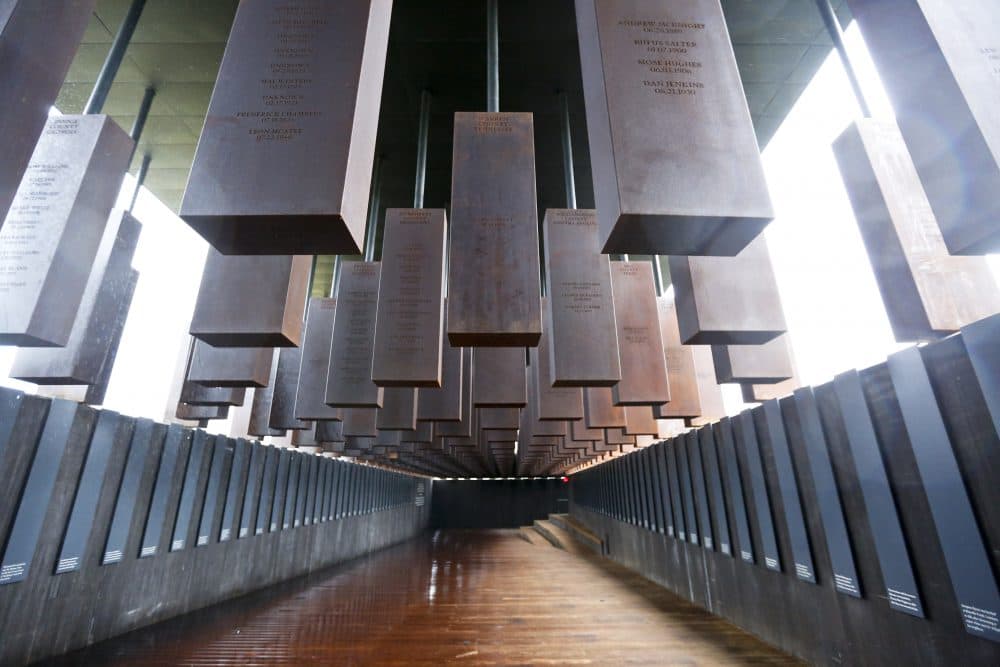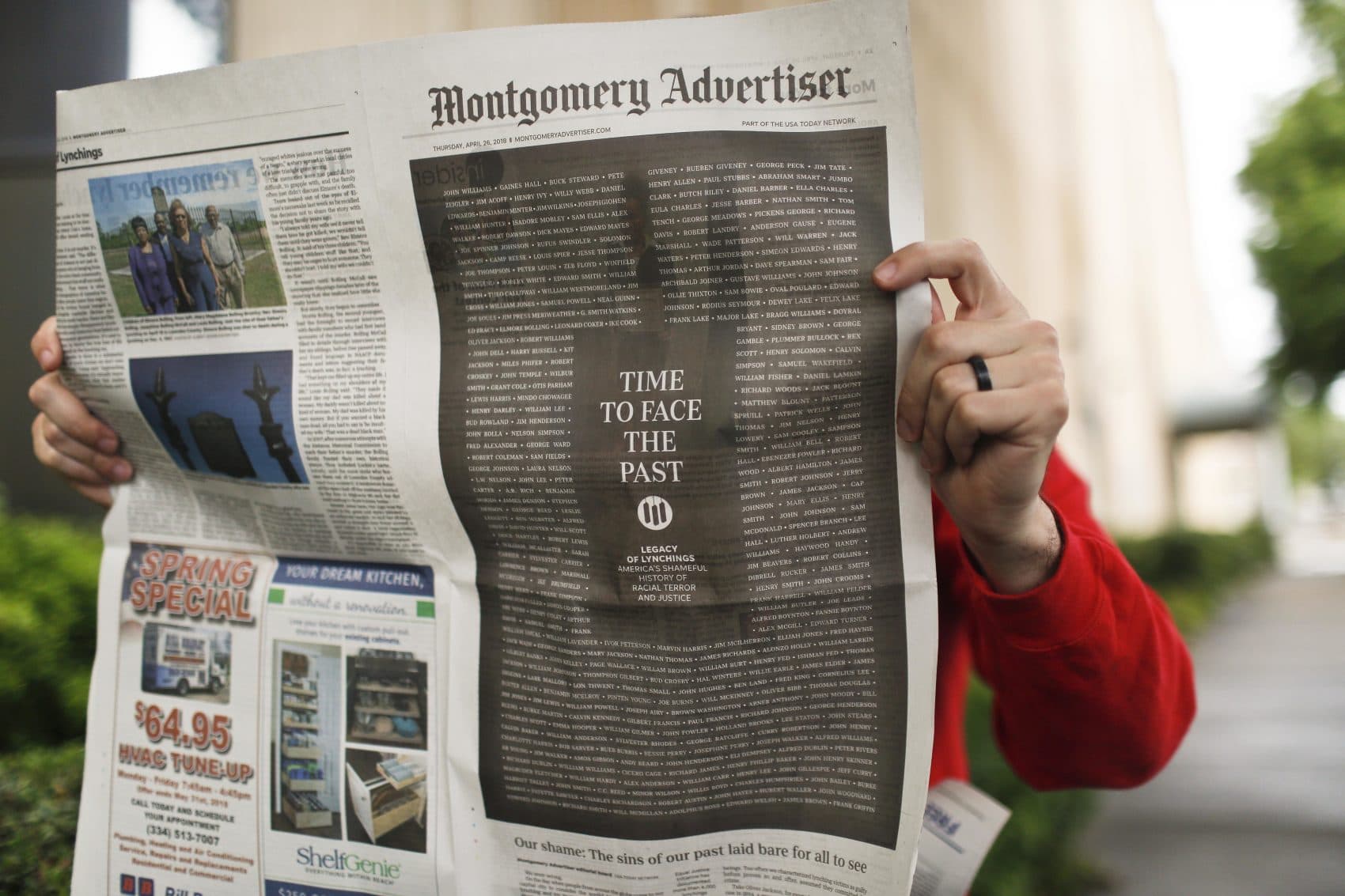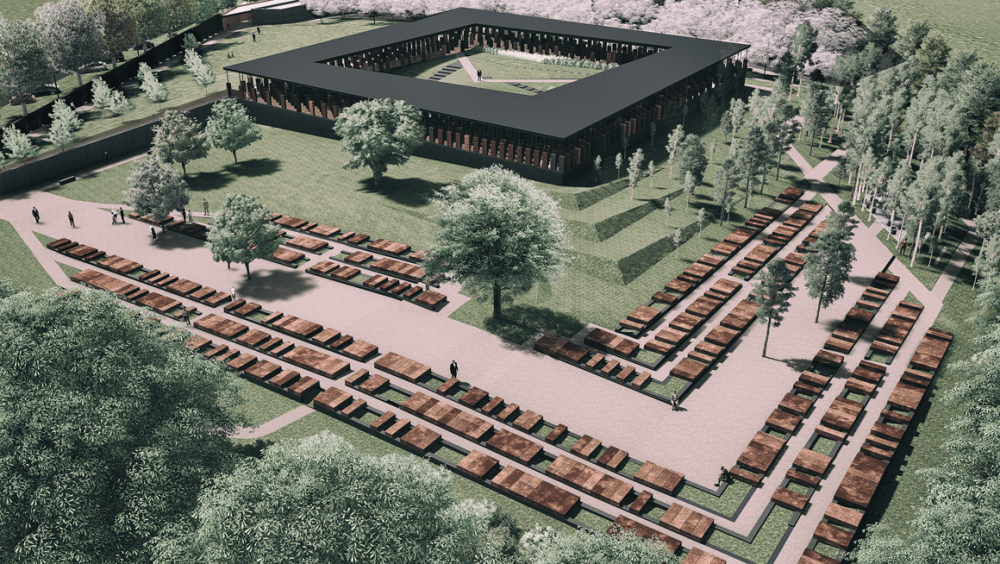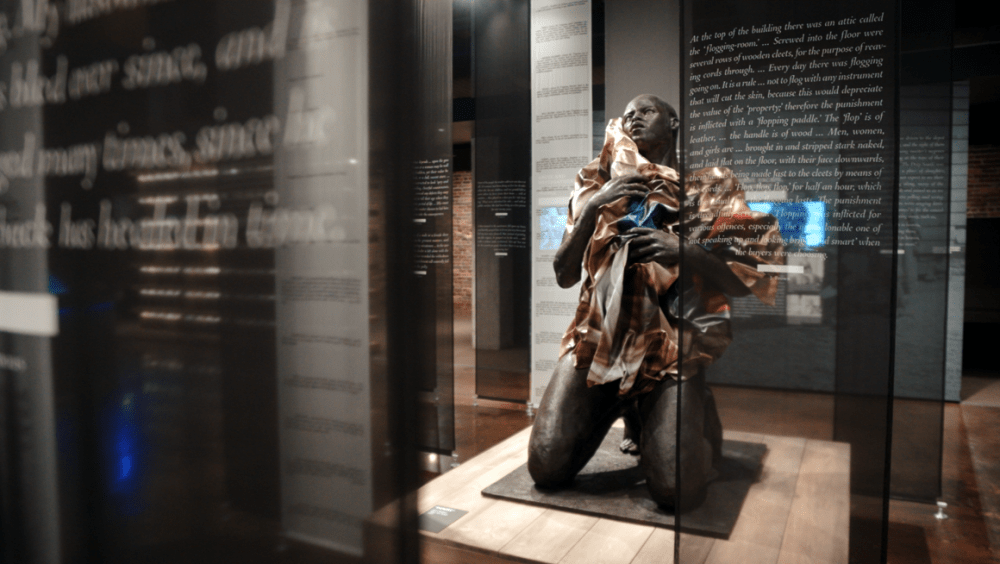Advertisement
Alabama Museum Opens In Remembrance Of Lynching Victims
Resume
With David Folkenflik
The National Memorial for Peace and Justice opened in Montgomery, Alabama, Thursday. We'll look at how the museum reckons with America's history of white supremacy and its victims.
Guests
Bro Krift, executive editor, the Montgomery Advertiser. (@BroKrift)
Kidada Williams, professor of history, Wayne State University, who researches African-American history and black lived experiences of racist violence. (@KidadaEWilliams)



From The Reading List
Montgomery Advertiser: "Our shame: The sins of our past laid bare for all to see" — "On the day when people from across the globe come to our capital city to consider the sordid history of slavery and lynching and try to reconcile the horrors of our past, the Montgomery Advertiser recognizes its own shameful place in the history of these dastardly, murderous deeds.
"We take responsibility for our proliferation of a false narrative regarding the treatment of African-Americans in those disgraceful days."
Slate: "The Psychic Toll of Night Rides -- How survivors of Klan violence described the long-term injury wrought by white terror" — "A wave of terror had swept across many former slaveholding states after Congress passed the 1867 Second Reconstruction Act, requiring the former rebel states to write new constitutions recognizing black American men’s right to vote. Armed white supremacists organized themselves into posses bent on curbing the possibilities of black liberation. Rather than reigniting the war and fighting the politicians or soldiers who made legal freedom and resulting civil and political rights for blacks possible, these men operated as racial vigilantes, waging organized assaults on civilians.
Contemporaries often described this violence colloquially as visits, suggesting harmless social calls, language that masked the atrocities nightriders typically committed. Vigilantes attacked families in their homes in the middle of the night and often without warning. Some men simply fired inside their targets’ homes but others invaded these spaces, holding entire families hostage. Most people visited were not prepared for raids, even if they had learned of them happening to someone else or were threatened with a visit."
This segment aired on April 30, 2018.
